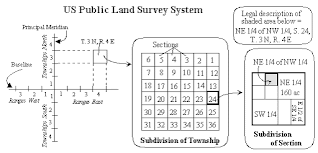 |
| fanniemae survey racial bias in appraisals, real estate appraiser, fannie mae, freddie mac, racial bias, discrimination, survey, fha, home loan, diversity |
Fannie Mae just had a survey for appraisers about racial bias in appraising. Oddly enough I didn't receive an email or notice about it even though I'm on the list. Thankfully appraisers are sharing the survey. It'd be nice if the appraiser organizations would also share the survey besides the government notifying interested parties.
I think a survey is a good start. While there is currently a lot of talk about bias in appraising in the media I don't believe there is actually that much bias in appraising. It's a math formula based on numbers. At least a couple of software programs and then a few different people review each appraisal. The lenders, AMCs want the deal to go through. If they thought the appraiser was biased and killing their deals, they'd end up on the do not use lists and never be used again.
There is a lot of talk about bias in the media. The three main media stories about racial bias have been false. I did a FOIA request to get a copy of the investigation results of two of the cases in which people filed complaints. One didn't file a complaint. I'm still waiting for results. HUD makes it difficult by forcing you to file a new FOIA every 30 days because the investigation isn't complete. All other government departments only make you file one. They give you the results of the investigation when it's over.
Below are some of the questions. I am including my answers to the two free form questions at the end.
Question: "What can appraisers do to decrease racial bias in appraisals and incidents that increase reputational risk for the profession?"
(My response is to the second part of the question) "Appraisers should explain appraisal theory, methodology, comparable search, comparable adjustments, comparison of the subject to the comparables, why specific comparables were chosen over others, comments and overall report better for lay people buyers, sellers who will read it even though they are not the client. This is important because they are the ones who complain, file complaints and tell the media their generally mistaken interpretation of the report i.e. any value which doesn't meet their expectation "must be racial bias." Fannie Mae could add a form for lay people so they can properly understand, interpret the report and know how to properly request a reconsideration of value if merited."
Question: "What can Fannie Mae do to decrease racial bias in appraisals?"
Answer: "While I agree racism and racial bias exist I don't feel it's a major issue in appraising today. Buyers, sellers, agents are upset that appraisal values aren't meeting contract price which is currently higher that market value due to lack of inventory and low interest rates. People refinancing are upset that values aren't meeting their false high perceptions of value of their home. Fannie Mae can help reduce the false perception of mass racial bias with buyer, seller, agent education about appraisal theory, process, reports and how to submit merited reconsideration of value requests."
I personally feel that there are some people that will take some rejections and automatically assume bias because they've been discriminated against in the past. Some of these people need education about appraisals and valuations. Three appraisers can appraise the same property and come up with three different numbers. The variation should be slight if we're talking average sized tract homes, condos in areas with median prices homes, a sufficient turnover rate, home supply and a median density. There will be more variation on the extreme ends of value. Even Zillow admits this with their algorithms. That's why they don't give a Zestimate for homes above or below a certain price range. They also don't give Zestimates in areas of lower priced homes because their formula is not as accurate with limited data, older homes and homes in inferior condition. This is per Zillow themselves. Corelogic has a similar statement about their estimates.
Mary Cummins of Cummins Real Estate is a certified residential licensed appraiser in Los Angeles, California. Mary Cummins is licensed by the California Bureau of Real Estate appraisers and has over 35 years of experience.
- Mary Cummins LinkedIn
- Mary Cummins Meet up
- Cummins Real Estate on Facebook
- Mary Cummins Real Estate blog
- Cummins Real Estate on Google maps
- Mary Cummins of Animal Advocates
- Mary Cummins biography resume short
- Mary Cummins Real Estate Services
- Animal Advocates fan page at Facebook.com
- Mary Cummins
- Mary Cummins Animal Advocates on Flickr photos
- Mary Cummins Animal Advocates on Twitter.com
- Mary Cummins on MySpace.com
- Mary Cummins on YouTube.com videos
- Mary Cummins of Animal Advocates on Classmates
- Mary Cummins on VK




















